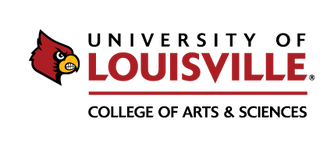|
Network Models of Psychopathology Part I Benjamin Calebs, B.A. The precise nature of mental disorders has often been debated within the field of psychology. In particular, psychologists have debated about whether mental disorders are socially-constructed or whether they are biologically-based like other medical diseases. One exciting new way to address this issue is the network approach to psychopathology (Borsboom & Cramer, 2013; McNally, 2016). This approach involves a reconceptualization of psychopathology that builds on insights from various perspectives on the nature of mental disorders. However, before exploring where the field of psychology may be headed, it would be useful to start with a look at where psychology has been. This will be helpful for understanding and appreciating network models of psychopathology. Categories versus Dimensions? As was mentioned, psychologists have different theories about the nature of mental disorders. There has also been much debate about whether psychopathology should be measured using a categorical framework or a dimensional framework. A categorical conceptualization of psychopathology uses a cut-off score to define who has a mental disorder and who does not. In this framework, an individual either has or does not have a mental disorder. The problem with cut-off scores is that a cut-off can seem arbitrary and may not necessarily relate to the impairment that an individual experiences as a consequence of their symptoms of psychological distress. A dimensional conceptualization looks at mental disorders as sets of symptoms that many individuals experience to some degree but that some individuals experience more than others. For example, many people might get sad from time to time, but someone with depression would have this experience more days than not over an extended period of time. The dimensional approach highlights this inherent variability across individuals in symptoms that are associated with mental disorders. Latent Variable Theory? Interestingly both of these frameworks (i.e., the categorical framework and the dimensional framework) operate from a shared underlying theory that is often taken for granted. This theory is known as latent variable theory (Borsboom et al., 2016; Eaton, 2015; McNally, 2016). Latent variable theory is based on the idea that many mental disorders are latent constructs that are unobservable. This implies that mental disorders cannot be directly measured. However, researchers and clinicians can gather information about the symptoms associated with mental disorders, such as thoughts, feelings, and behaviors. For example, latent variable theory suggests that generalized anxiety disorder is not directly observable, but the symptoms of generalized anxiety disorder can be observed and measured. Clinicians and researchers use measures of observable anxiety symptoms like worry, insomnia, fatigue, and irritability to evaluate an individual’s level of anxiety. The number and severity of anxiety symptoms are used to identify clinically relevant generalized anxiety (Borsboom et al., 2016; Eaton, 2015). Latent variable theories of mental disorders borrow the model of disease from the field of medicine (Borsboom & Cramer, 2013; Borsboom et al., 2016; Eaton, 2015). Following latent variable theory, a mental disorder is considered a disease that causes symptoms (e.g., generalized anxiety disorder causes insomnia and fatigue) in the same way that a physical disease causes physical symptoms (e.g., asthma causes coughing). However, there are some shortcomings associated with this understanding of psychopathology. It is unclear if there is a single underlying cause behind many mental disorders in the same way as exists for physical diseases. For example, it is known that coronary heart disease is caused by a build-up of plaque deposits in the coronary arteries and that this can, in turn, cause symptoms such shortness of breath and chest pain. Yet it is unclear if mental disorders behave in this same way. Also, the symptoms of mental disorders are considered independent of one another in latent variable theory. This means that it is assumed that the symptoms are unrelated to each other. Instead, symptoms are theorized to be associated because of their relationship to the underlying, unobservable mental disorder. Networks of Symptoms? Researchers in the field of psychometrics, which is the study of how psychological constructs are measured, have begun to apply a novel theoretical framework known as network theory to help understand psychopathology (Borsboom & Cramer, 2013; McNally, 2016). Network theory is an interdisciplinary field that studies anything that can be conceptualized as a collection of parts that are connected in some way. Network theory has been applied to a variety of domains. Network researchers have looked at everything from neural networks to food webs to economies. Network theory and analysis have often been applied to social networks with individuals acting as nodes in a network and the relationships between them serving as links. Network analysis can be used to study the structure of networks, as well as the dynamic interaction between the different nodes (Newman, 2003). In the study of psychopathology, the symptoms are considered nodes and the correlations between them are considered the links. Mental disorders can then be conceptualized as a network of symptom nodes. For example, an eating disorder could be conceptualized as a network consisting of symptoms such as the fear of gaining weight, a strong desire to be thin, and dissatisfaction with one’s body shape (Forbush, Siew, & Vitevitch, 2016). Clinicians and researchers also acknowledge that mental disorder symptoms have the potential to interact, with symptoms of a disorder acting as the cause of other symptoms within that same disorder. For example, someone with generalized anxiety disorder could experience severe worrying. These worries could cause the person to lose sleep. This insomnia could, in turn, lead to irritability and fatigue as the individual is unable to get adequate rest (Borsboom & Cramer, 2013; Borsboom et al., 2016; Eaton, 2015). The different symptoms of a mental disorder are related, but some might be more related than others. Network analysis can help researchers better understand how the symptoms of which a mental disorder is composed are related. Why do we care about these different models of psychopathology? Stay tuned for Part II where we discuss clinical implications of network analysis and show some of the work we’ve been doing in the EAT lab.
0 Comments
Leave a Reply. |
Archives
January 2024
Categories |
- About
- People
- Our Research & Publications
-
Participate in Research
- Personalized Interventions and Outcomes: Navigating Eating Disorder Experiences and Recovery (PIONEER) Study (Online)
- Youth Eating Study (YES!)
- Tracking Restriction, Affect and Cognitions (TRAC) Study (Online)
- Virtual Reality Study
- Facing Eating Disorder Fears Study (Online)
- Personalized Treatment and CBT-E Study (Online)
- Body Project Summer Camp
- The Body Project
- Clinical Screener Study (Online)
- Clinic, Supervision, and Consultation
- Blog & In the Press
-
Archived Studies
- Predicting Recovery Study (Online)
- Online Single Session Resources
- Reconnecting to Internal Sensations and Experiences (RISE) Study
- Web-Based Mindfulness Study
- Personalized Treatment Study
- Online Imaginal Exposure Study
- In-Vivo Imaginal Exposure Study
- Daily Habits 3 Study
- Daily Mood Study
- COVID-19 Daily Impact Study
- Conquering fear foods study
- Louisville Pregnancy Study
- Approach and Avoidance in AN (AAA) Study
- Web-Based Mindfulness for AN & BN Study
- Barriers to Treatment Access (BTA) Study!
- Mindful Self-Compassion Study
- Network EMA Study
- Legacy of Hope Summit Report
- DONATE-CURE EATING DISORDERS!
- Directions
- Statistical Consultation
- About
- People
- Our Research & Publications
-
Participate in Research
- Personalized Interventions and Outcomes: Navigating Eating Disorder Experiences and Recovery (PIONEER) Study (Online)
- Youth Eating Study (YES!)
- Tracking Restriction, Affect and Cognitions (TRAC) Study (Online)
- Virtual Reality Study
- Facing Eating Disorder Fears Study (Online)
- Personalized Treatment and CBT-E Study (Online)
- Body Project Summer Camp
- The Body Project
- Clinical Screener Study (Online)
- Clinic, Supervision, and Consultation
- Blog & In the Press
-
Archived Studies
- Predicting Recovery Study (Online)
- Online Single Session Resources
- Reconnecting to Internal Sensations and Experiences (RISE) Study
- Web-Based Mindfulness Study
- Personalized Treatment Study
- Online Imaginal Exposure Study
- In-Vivo Imaginal Exposure Study
- Daily Habits 3 Study
- Daily Mood Study
- COVID-19 Daily Impact Study
- Conquering fear foods study
- Louisville Pregnancy Study
- Approach and Avoidance in AN (AAA) Study
- Web-Based Mindfulness for AN & BN Study
- Barriers to Treatment Access (BTA) Study!
- Mindful Self-Compassion Study
- Network EMA Study
- Legacy of Hope Summit Report
- DONATE-CURE EATING DISORDERS!
- Directions
- Statistical Consultation



 RSS Feed
RSS Feed
